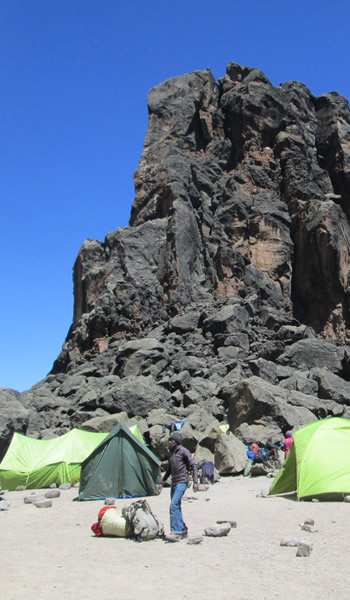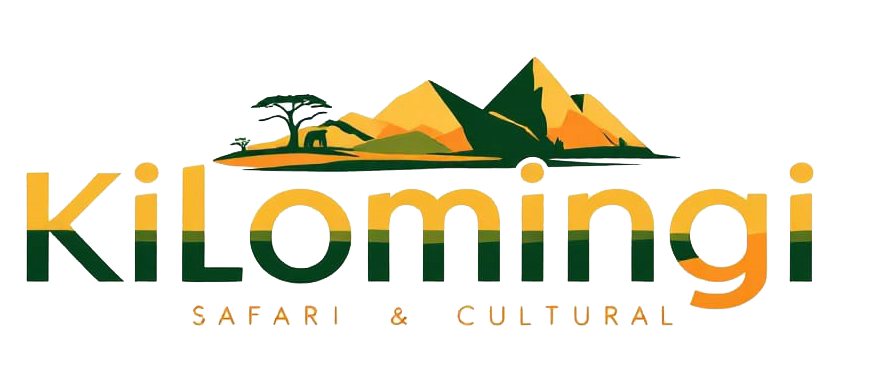Kilimanjaro’s Steepest and Shortest Path
The Umbwe Route has a reputation as the steepest and most direct route up Mount Kilimanjaro. It was once known for its demanding approach via the Western Breach and Arrow Glacier, but due to safety concerns and rockfall incidents, most operators now reroute climbers to join the Machame Route on Day 2.
Today, the Umbwe Route is still challenging and less traveled in its early stages, with very low traffic for the first two days. It merges with Machame, Lemosho, and Shira trekkers at Barranco Camp, before following the Southern Circuit to the summit and descending along the Mweka Route.
Because of its steepness and limited acclimatization opportunities, this route is best suited for experienced trekkers. The 6- and 7-day options are recommended, as the 5-day version has very low summit success rates.
.
Umbwe Route Highlights

Duration: 6-7 Days
Accommodation: Camping
Difficulty: Very Challenging, Steep and Direct
Scenery: Dramatic Ridges, Valleys, and Stunning Views of Kibo
Best For: Experienced and Fit Hikers Seeking Adventure
.
Umbwe Route Itinerary (6 Days)
Day 1: Umbwe Gate (1600 m) – Umbwe Cave Camp (2850 m)
Trekking Time: 5-7 hours
Distance: 10.5 km
Altitude Gain: 1250 m
The trek begins at Umbwe Gate, following a forestry road into dense rainforest. The trail steepens quickly as it climbs along a ridge between the Lonzo and Umbwe Rivers. After a strenuous day, arrive at Umbwe Cave Camp, tucked in thick undergrowth, for dinner and overnight.
.
Day 2: Umbwe Cave Camp (2850 m) – Barranco Camp (3900 m)
Trekking Time: 4-6 hours
Distance: 6.5 km
Altitude Gain: 1050 m
The landscape changes dramatically as the rainforest gives way to moorland and rocky ridges. The trail follows a narrow ridge before flattening near the Barranco Valley. Arrive at Barranco Camp, where climbers from the Machame, Shira, and Lemosho routes converge.
.
Day 3: Barranco Camp (3900 m) -Karanga Camp (3960 m)
Trekking Time: 4-6 hours
Distance: 6 km
Altitude Gain: 60 m
Climb the imposing Barranco Wall (257 m), a steep scramble using both hands and feet, before traversing ridges and valleys of the Southern Circuit. Stop overnight at Karanga Camp, unless on the shorter 5-day route (which continues to Barafu).
.
Day 4: Karanga Camp (3960 m) – Barafu Camp (4670 m)
Trekking Time: 4-5 hour
Distance: 3.5 km
Altitude Gain: 710 m
A short but steep climb leads to Barafu Camp, perched in a barren high-altitude desert. The camp is exposed to strong winds and freezing temperatures. Spend the afternoon resting, preparing gear, and eating before the midnight summit attempt.
.
Day 5: Barafu Camp (4670 m) – Uhuru Peak (5895 m) – Mweka Camp (3100 m)
Summit:
Trekking Time: 6-8 hours
Distance: 4.5 km
Altitude Gain: 1225 m
Descent:
Trekking Time: 5-8 hours
Distance: 11 km
Altitude Loss: 2795 m
Awake around midnight for tea and biscuits before starting the steep ascent to Stella Point (5739 m), a major milestone on the crater rim. Continue for 1–2 hours to Uhuru Peak (5895 m), the highest point in Africa.
After celebrating at the summit, descend back via Barafu Camp for a short rest, then continue down to Mweka Camp for your final night on the mountain.
.
Day 6: Mweka Camp (3100 m) – Mweka Gate (1640 m)
Trekking Time: 3-5 hours
Distance: 9 km
Altitude Loss: 1460m
Descend through lush rainforest to Mweka Gate, where you sign out and receive your Kilimanjaro summit certificate. From here, transfer back to Moshi or Arusha.
.
Pros and Cons of the Umbwe Route
+ Pros
- Least crowded route in the early days
- Very direct and scenic approach
- Shorter trekking distances on some days
– Cons
- Very steep and physically demanding
- Limited acclimatization, lower success rates
- Recommended only for experienced hikers
